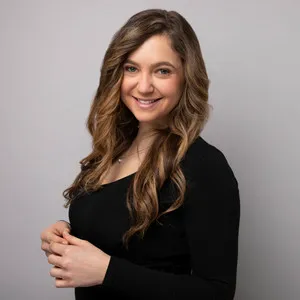As someone who writes about food on a weekly basis, my relationship with food is a bit crazed. Some events focus on the health-conscious and others are the polar opposite, allowing me to eat food for the soul, but that may not be so great for my bod. That’s why when I came across Flexible Dieting, it intrigued me.
Insane diets on the internet are always in the back of my mind as they’re trends I come across a lot in my research for writing and daily life. So how does anyone know if any of these diets are actually worth trying or whether they’re actually bad for you?
Flexible Dieting is a lifestyle change that is said to allow someone to eat the things they enjoy, while also losing weight or gaining muscle depending on his/her goal. And Zach Rocheleau’s FDL program aims to show you how to get started with just that.
How He Got Started
Zach Rocheleau started his journey with Flexible dieting about 7 years ago. At 20 years old, he started the Paleo diet, but that led to an unhealthy relationship with “healthy” food, where he was incredibly regimented.
After about a year of seeing food as good or bad, black or white, he realized it was time for a change and started from scratch, reading up on alternate trends that would give him a healthier relationship with food while still maintaining his body and health goals. Enter Flexible Dieting.
What is Flexible Dieting?
The program is based around a mix of calorie maintenance, macronutrients/meal quality and a little bit of support from supplements. He stressed that it’s a lifestyle, not a diet, and that after a while it becomes instinctual so you don’t even notice you’re following it.
And have no fear, you can still have some amazing food while doing this. Just take a look at his Youtube channel for a peep at some of his incredible-looking recipes.
The plan is based on the idea that calories we burn are dependent on the types of foods we eat. We burn 25% of the calories we get from protein, whereas we only burn about 10% of the calories we get from fat/carbs.
So monitoring the percentage of protein to carbs to fat will help us control the results that food has on our bodies, while still allowing us to eat some of each.
He says to think of it like a transaction. “Think of our bodies as a credit card and whether we spent what’s on it now is on us. In the moment buying that $500 item is good… but in the long run it feels like sh*t when you have to pay the credit card bill.”
How does it work?
This part is a bit complicated, but totally worth figuring out.
Rocheleau mentions that each gram of our Macros has a certain amount of calories. Carbs = 4 Calories per gram. Protein = 4 Calories per gram. Fats = 9 Calories per gram.
This is the way to calculate calories based on macros instead of focusing on labels, which can be somewhat inaccurate.
Each person is different, so the amount of macros they have to consume and how much of each one (protein, carb and fat) is dependent on their lifestyle.
What’s the Exercise Plan for This?
Anything.
That’s right. You can literally keep up with any exercise regimen you were already doing. In fact, Rocheleau even has some workouts as part of his program.
Can We Go Back to The Recipes?
Some of his most popular recipes include a full Domino’s copycat pizza, all kinds of homemade protein pop tarts, and dessert & savory crunch wraps that are also healthier than your average crunch wrap.
Rocheleau says, “I just want people to realize more than anything that they are in control,” and making recipes like his allow your taste to be out-of-control, but your ingredients to stay in check.
If you want more information, you can check out his website (linked above). FDL is definitely something to have on your radar. I have a feeling this kind of eating is about to become pretty popular pretty fast.


